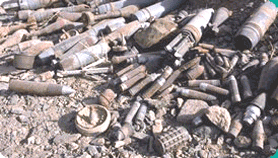Compliance and the CCW
Since it was first negotiated in 1980, States Parties to the CCW have been discussing possible mechanisms to promote compliance with the provisions of the Convention and its Protocols. Over the years a general trend has emerged amongst proposals on compliance for an approach based on consultation and verification.
Many States Parties have noted the importance of adopting a compliance mechanism so that the Convention and its Protocols would have some teeth, so to speak. At the same time, many States Parties have expressed the need for the Convention to retain the spirit of consultation and cooperation in which it was negotiated and adopted in 1980.
Although the attention of States Parties has not been focused intently on compliance within the CCW, the European Union, the U.S. and South Africa have all made consistent efforts to address the issue. Should States Parties begin to consider this issue with a view to negotiating concrete measures to encourage adherence with the Convention, it is likely that a combination of the proposals put forward so far will be adopted.
The European Union has proposed a two-tier approach whereby States Parties would initially address their concerns bilaterally or through the Secretary General of the United Nations. This approach is similar to the compliance mechanism already in place in Amended Protocol II on mines and booby traps. The second tier of this proposed approach would be for a Consultative Committee of qualified experts to report on alleged violations of the Convention. This measure would be taken as a last resort and would be guided by the principles of cooperation and dialogue with all relevant parties.
If it were to garner consensus within the CCW, the EU proposal would be adopted as an amendment to the Convention as a whole and would thus apply to all of its annexed Protocols. This would be a simpler approach than the alternative option of amending individual Protocols to include compliance provisions. While it remains unlikely at this stage, in 2004, that the CCW will see any substantive movement on compliance, it remains an issue of great importance for all instruments of international humanitarian law and arms control and disarmament.



















